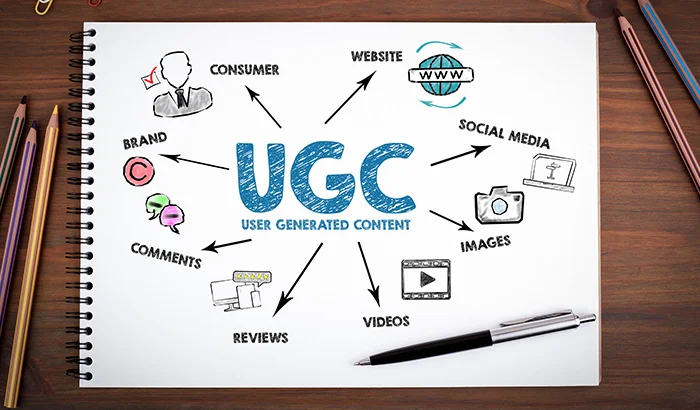Effective SEO for e-commerce services involves a mix of on-page, off-page, and technical tactics, including optimizing product and category pages, improving site speed, and enhancing the user experience. Using keyword research, schema markup and building quality backlinks are also key for higher rankings.
The goal is to attract highly relevant, high-intent traffic people actively searching for your products. Done right, SEO not only boosts your visibility but also builds credibility and authority within your industry. This guide will walk you through the most effective SEO strategies to help your e-commerce services site rank higher and outperform the competition.
SEO strategies for e-commerce websites to rank higher on search engines
1. Effective Keyword Research for e-commerce services
Keyword research is your foundation for e-commerce SEO audits. According to Ahrefs, about 90% of web pages get no organic search traffic at all, which means if you're not targeting the right keywords, your pages may be invisible in search results.
Here's the kicker: long-tail keywords make up about 70% of all web searches (source: Search Engine Land). These keywords are highly specific (e.g., “best waterproof backpacks for hiking”), and while they might get less search volume individually, they often lead to higher conversions because they match what buyers are actually looking for. So, take time to find these hidden gems that your competitors might overlook!
2. Optimizing Product Pages
Optimizing product pages is crucial because these are the pages that are most likely to convert. Backlinks found that high-quality product descriptions with relevant keywords can lead to a 5% higher conversion rate. Don't just copy generic descriptions from manufacturers- customers want to know what makes your product unique and why they should buy it?
When it comes to SEO-friendly URLs, Google recommends that URLs be short, readable, and descriptive. Instead of a URL like "yourstore.com/product12345," aim for something like "yourstore.com/blue-leather-jacket" for better visibility and clarity. It not only helps search engines but also makes it easier for users to understand where they are.
3. Image Optimization for Speed and SEO
Speed is everything when it comes to user experience. Google reports that 53% of mobile users will leave a website if it takes longer than 3 seconds to load. Images make up a large portion of a page's load time, so optimizing them is critical. Image compression tools like Tiny PNG or Image Optim can reduce image size without sacrificing quality.
Alt text is also essential. It not only improves SEO but also accessibility. According to W3C, about 15% of the world's population has some form of disability, and alt text ensures that your site is inclusive for all users. It also helps your product images rank in Google Image Search, which can drive additional traffic to your site.
4. Mobile Optimization
Mobile optimization isn't just a nice-to-have—it's a necessity. Google switched to mobile-first indexing, meaning it now ranks sites based on their mobile version rather than the desktop version. According to Statista, mobile e-commerce services sales will account for 72.9% of total e-commerce services sales by 2021. If your site isn't optimized for mobile, you're losing out on a massive chunk of traffic.
Ensuring that your site loads quickly and is easy to navigate on mobile devices is essential. Page speed is directly linked to conversion rates. For example, Shopify found that a 1-second delay in page load time can reduce conversions by 7%. So, make sure your mobile experience is fast, user-friendly, and optimized for a smooth checkout process.
5. Internal Linking for Improved Navigation
Internal linking helps with both SEO and user experience. According to Moz, a well-planned internal linking structure can increase organic search visibility by up to 40%. When you link to related products or categories, not only do you help search engines understand the structure of your site, but you also guide users to discover more products they might be interested in.
It's all about reducing bounce rates. Studies show that internal links can keep visitors on your site longer, improving engagement and ultimately increasing conversions.
6. Implementing Schema Markup
Schema markup is a powerful tool to enhance your visibility in search results. According to Search Engine Journal, sites with schema markup tend to have higher click-through rates (CTR). In fact, pages with rich snippets have been shown to see up to 30% more clicks compared to those without.
Adding schema markup to your product pages means that Google can display rich snippets with product ratings, prices, and availability directly in the search results, making your product stand out and enticing more users to click. It's an easy way to make your pages more attractive without having to rely on better rankings alone.
7. Building Quality Backlinks
Backlinks are a crucial part of SEO, as they signal trust and authority to search engines. In fact, backlinks are one of the top 3 ranking factors for Google (source: Moz). But it's not just about the quantity; it's about the quality. A hrefs reports that 94% of all pages that rank in the top 10 search results have at least one backlink.
To build backlinks, focus on earning them from high-authority websites, blogs, and influencers in your industry. A study found that guest blogging can result in more than 55% of your backlinks coming from top-tier sites, so it's worth investing time in outreach and building relationships for backlink opportunities.
Ranking higher on Search Engines
In today's competitive e-commerce market, implementing a strong SEO strategy is essential to ensure your website ranks higher on search engines, drives organic traffic and converts visitors into loyal customers. If you're looking to take your e-commerce services business to the next level with expert SEO strategies tailored to your unique needs, RND Softech is here to help. Our team of professionals specializes in driving results through innovative SEO tactics and personalized digital marketing solutions. Let us guide you in optimizing your website to not only rank higher but to also deliver an exceptional user experience that enhance sales.












